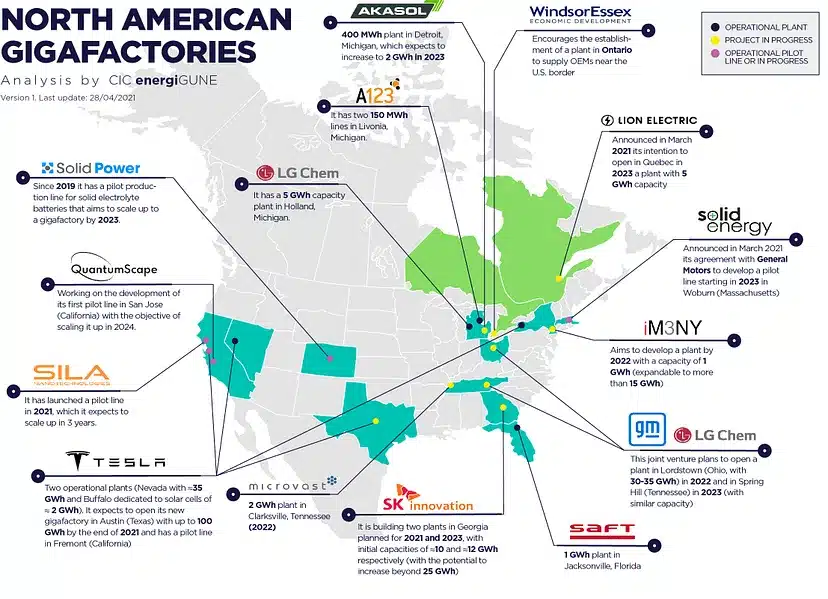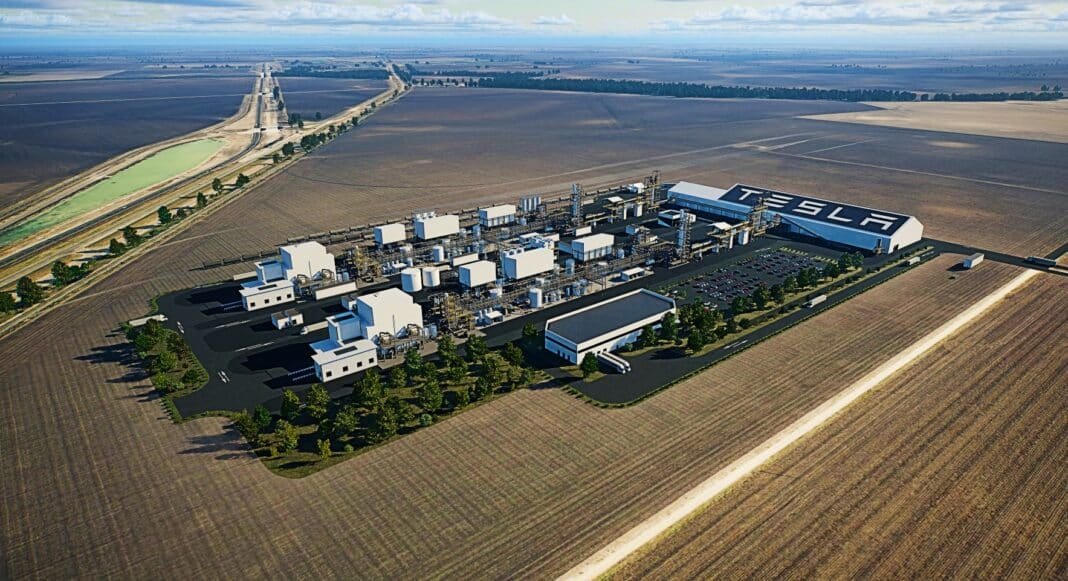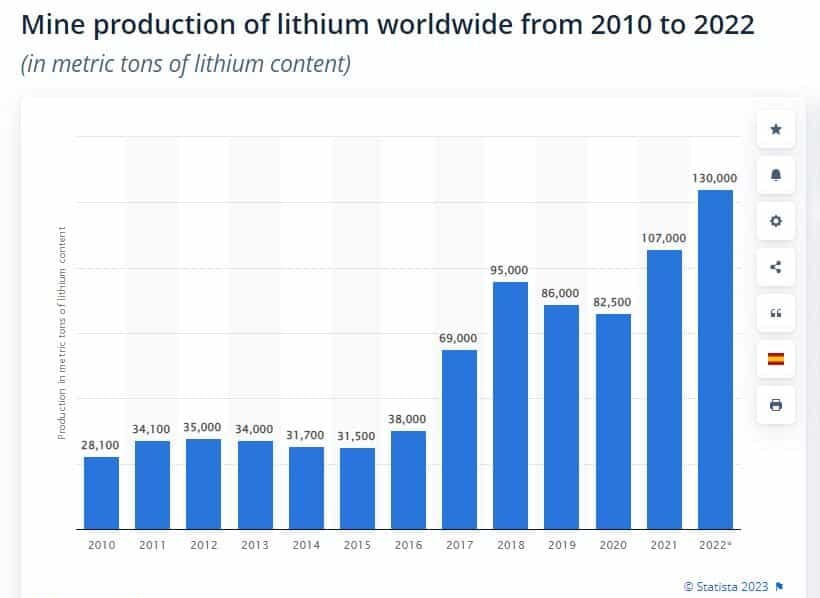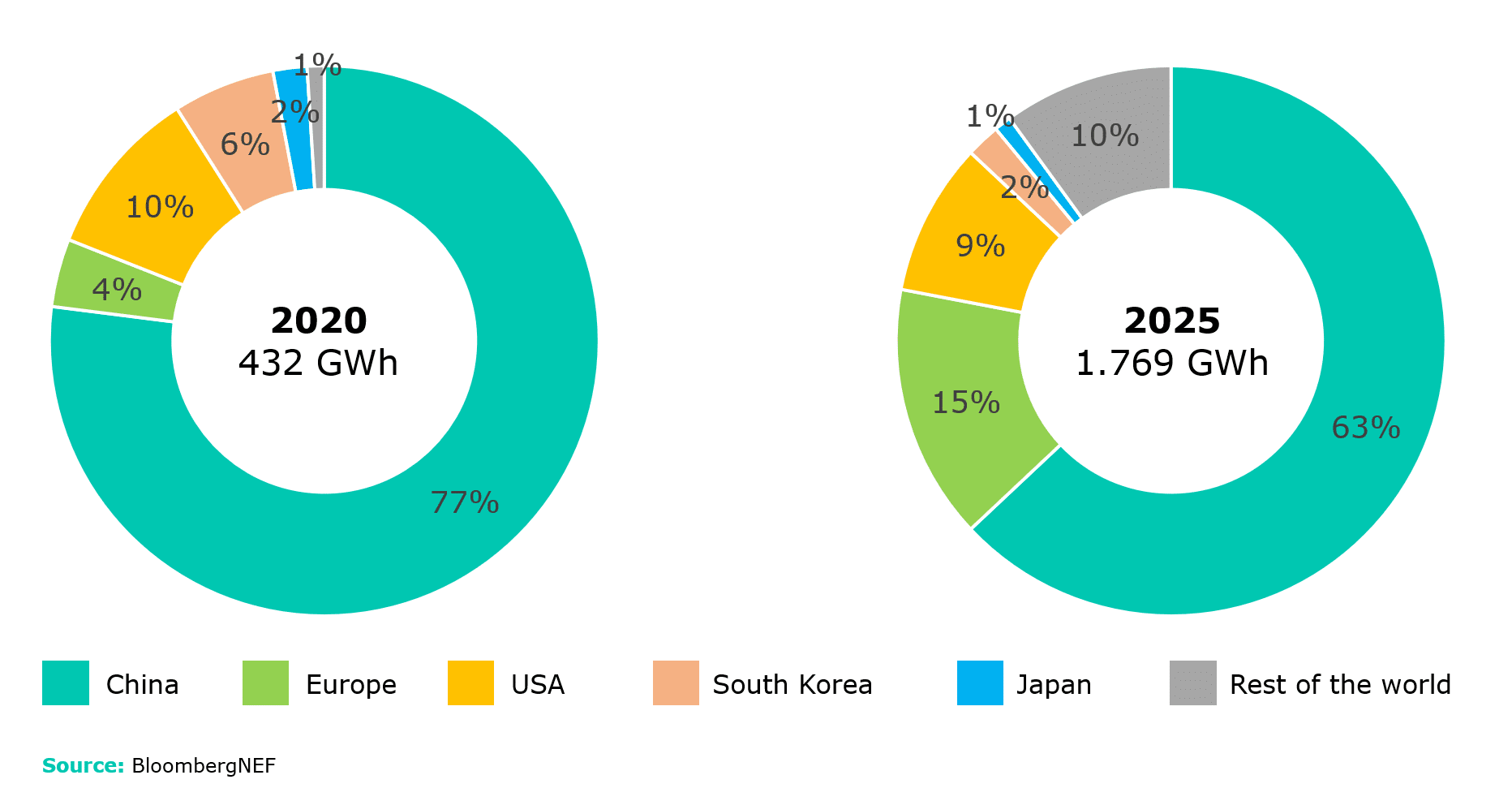Tesla and Elon Musk break ground at the site of the electric carmaker’s new lithium refinery in Corpus Christi, the first of its kind in North America, which will cost $1 billion upon completion.
Tesla and Lithium Production for EVs
Last year, Musk tweeted that Tesla may get into the lithium mining and refining business directly due to the high cost of the metal element. He also said that the availability of battery-grade lithium was a “fundamental chokepoint” for the EV industry and other sectors.
The Tesla and SpaceX tech CEO showed the average price of lithium per tonne, which increased massively last year – $78,032/tonne. It has soared up to over 480% from 2021 to 2022, per Benchmark Mineral Intelligence data.
That big growth is driven by the upsurge in EV sales and a struggle to secure supply.
Musk said that there’s no shortage of lithium because it’s available almost everywhere but extracting and refining it is slow. True enough, there are deposits of lithium all over the U.S. to meet the growing demand.
The US Geological Survey reported that the country has 750,000 tonnes of recoverable lithium in 2021. This figure will go up as new reserves are discovered and established.
Global lithium production increased by 21% in 2022 compared to 2021, surpassing the highest in 2018 levels.
This increase was not because of new mines, but in large part due to existing Australian capacity getting online. Chile producers also increased production levels by several thousand tonnes.
The US is home to the world’s biggest lithium deposits after those in the so-called Lithium Triangle region in South America – Argentina, Bolivia and Chile. While the states of Nevada, North Carolina, and California together housed about 4% of the world’s lithium reserves.
Still, EV battery production capacity is rising at twice the speed of lithium supply.
Here’s the analysis by cicenergigune of North American EV battery gigafactories.

- The U.S. is currently producing only about 1,000 tonnes of lithium. But the country is projected to produce 91 GWh of lithium-ion batteries in 2025, which needs more than 75,000 tonnes of lithium content.
According to BloombergNEF, an increase of more than 300% in installed lithium cell production capacity worldwide is expected to reach about 1,769 GWh. China (63%) still takes the lead, followed by Europe (15%) while the US (9%) falls down to the third spot.
Lithium Cell Production Capacity in 2025
Lithium, a non-ferrous metal, is also known as “white gold” and is valuable in making EVs as it’s the lightest and least dense solid element. What that means for Tesla is producing EV units with a high power-to-weight ratio.
So unsurprisingly, the giant EV maker plans to build in-house lithium refinery and battery materials processing, refining, and manufacturing operations for its sustainable product line. Tesla’s investment in this facility is critical to its mission to accelerate the world’s transition to clean and sustainable energy.
That largely involves turning on the switch on EV production and accelerating end-use electrification and sustainable power generation and storage. This path enables Tesla to improve its bottom line while significantly earning revenues through its carbon credit sales. The credits are from the carbon emission reductions achieved with the company’s EV production.
The $1 Billion Lithium Refinery
Tesla will invest $375 million to construct the refinery to do away with its reliance on outside lithium supply. Once finished, the site will represent an investment of over $1 billion.
Musk further said that Tesla aims to produce enough battery-grade lithium hydroxide at the South Texas facility to make 1 million electric cars each year. Their goal is also to produce more lithium than what the rest of North America produces in that location.
Mining giant Albemarle revealed plans to invest $1.3 billion in a lithium processing facility in South Carolina last March. The company’s Silver Peak mining site in Clayton Valley in Nevada is currently the only one operating lithium mine in the US. It produces around 6,000 tons each year of lithium carbonate, representing only 1% of the world’s lithium carbonate supply.
Tesla expects its Texas facility to also process other intermediate lithium sources, such as recycled batteries and manufacturing scrap. The 1,200+ acre facility will be the place of the first industrial deployment of an acid-free lithium refining route.
Acid-free Lithium Refining Process
The conventional process of refining ore into battery-grade lithium usually involves crushing the raw material, heating it at high temperatures, and mixing it in a slurry with acids. Hydrochloric acid is often used in this process, which is considered hazardous by the U.S. Clean Air Act.
But Tesla’s innovative acid-free lithium processing will use less hazardous reagents and produce usable byproducts. It says in its Texas Comptroller’s filings that the refinery’s byproduct, a mixture of sand and limestone, will make beneficial use of traditional waste streams for producing construction materials.
Musk asserted that the facility will have no toxic emissions, saying “you could live right in the middle of the refinery and not suffer any ill effects.”
However, he didn’t disclose what would be the exact chemistry that Tesla will use for its acid-free lithium refinery. Yet, Texas Republican Governor, Greg Abbott, praised Elon Musk as the greatest entrepreneur on the planet.



